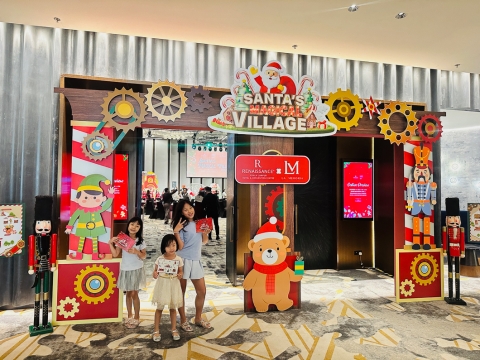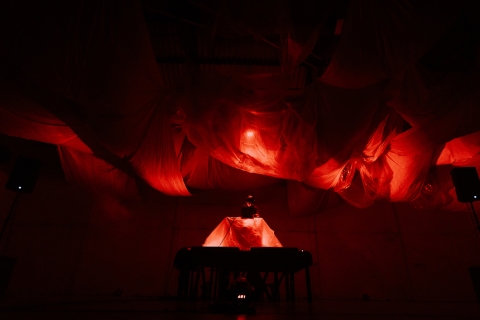The expression on my in-laws’ face was truly priceless when I suggested a visit to a leprosy settlement for a Sunday morning outing. But history buffs that they are, they were all up for it and we signed up for a heritage tour organised as part of the Mari market at the Sungai Buloh leprosy colony. The walk, organised by volunteers trying to preserve the heritage of this peculiar neighbourhood turned out to be one of the highlights of their visit to KL – and a eye-opening morning for us living so close to the “Valley of Hope”.


Apparently the Sungai Buloh Settlement was the second largest leprosarium in the world at its peak. It was established by doctor Ernest Travers as a response to the horrible living conditions of the leprosy patients in KL. The conditions were maybe partly thanks to the colonial law that required them to be isolated from the general population. Sungai Buloh was far enough from central KL, and its location in a lush valley with a constant cool breeze and surrounded by two rivers was deemed a suitable place for a more dignified life for the patients. It was opened in 1930. More of the history can be read here.


Apparently the approach was quite unusual in that the patients were encouraged to form a self-sufficient community with its own schools, markets, places of worship and even a short-lived currency. Those who were still able to live independently were given chalets and small plots for gardening, and those in need of care were treated in wards. At its busiest the Valley of Hope was home to 2,000 patients.


Despite the peaceful surroundings the patients were practically prisoners. The tragic isolation stemmed from social stigma and the false belief that the disease was highly contagious. Now it’s well known that leprosy is not particularly contagious and doesn’t transmit for example at birth, but in the 1930s and 1940s, patients were isolated from their families and babies born here were separated from their parents and given for up adoption.
Volunteers still help adoptees to track their heritage here. Books and a video have been produced to document the history of this extraordinary place and the people who lived here in isolation – and for those children who were separated from their parents and grew up without knowing where they came from or what happened to their parents.

Leprosy has long been a curable disease but 200 people still live here, both in the chalets and the wards, with a small grant form the government topped up by the local patients’ association. Even the youngest residents are now in their 60s and the area is a state of slow decay. Development is creeping in despite vague promises by the government to protect the area. It really would be a shame to see this lush green valley with all the heritage buildings be turned into another commercial, high-end development.



Tours at Sungai Buloh Settlement
The area is open to anyone to come and explore, or to shop in one of the many nurseries lining the streets. If you are interested in private tours, you can contact our fantastic guide Tony Lai at 016-2090488 or laikooithong@gmail.com. Tours can be run for a minimum of 5 people and recommended donation is minimum of RM300 per session. Tours in Mandarin are also available – for information in Mandarin do check the Facebook page


To read more on life in the settlement, check out this article:




















6 Responses
I’ve heard quite a bit about this spot but have never been. Thanks for sharing your insights.
I like it?
Thanks =) It’s a beautiful place!
Mystartr.com crowdfunding project You Are The Hero aims to build a story museum to document, store and exhibit the collective memory of the Sungai Buloh Leprosy Settlement community and planting 2440 flowers in the names of the forgotten heroes who contributed in finding cure for Leprosy since 1926. Its such a beautiful place with such a haunted past. Help save the place and the community there.
My father,dr alexander Guthrie Badenoch was acting superintendent while dr Gordon ryrie was absent ( on furlough?) circa 1930-32. He wrote down some of his memories while also writing his post-graduatediploma in public health for aberdeen university. On calcium blood serum. One of the inhabitants at the settlement was ah chai, who had known the previous terrible conditions before the valley of hope. Ah chai had lost his finger-tips to nerve leprosy, yet he fashioned two book stands from the last lead-pewter opium pipes. They are of the Buddha, and I still have them.
I would be delighted to send copies of agb,s memories of the place he loved most in Malaya.
Chris Badenoch
Hi Chris! That’s a really interesting family story! The place is truly fascinating, I would love a copy, I will email you!